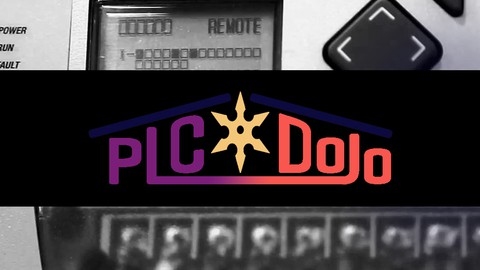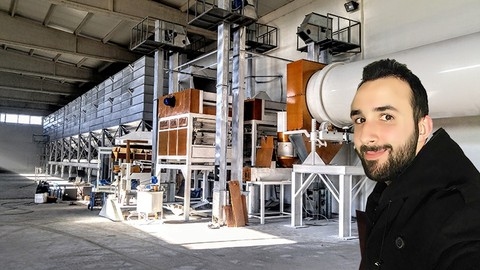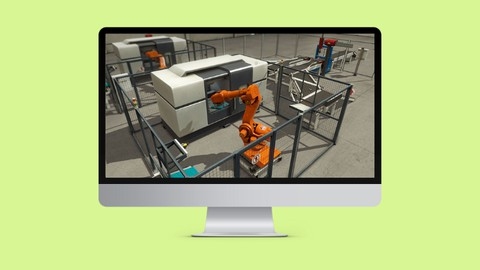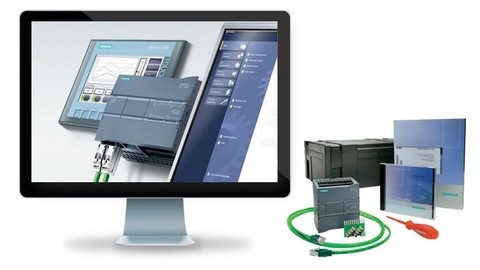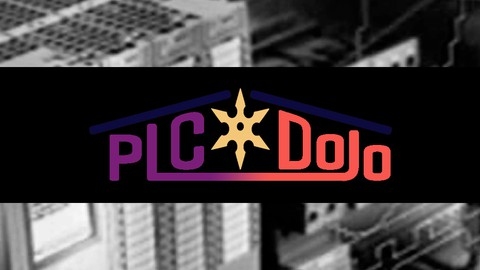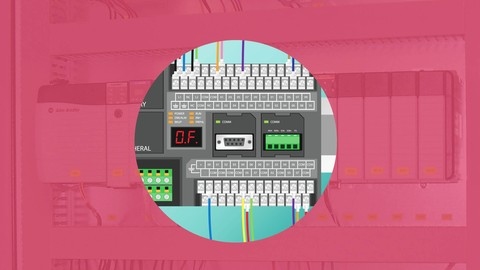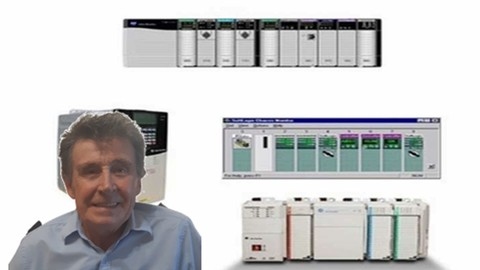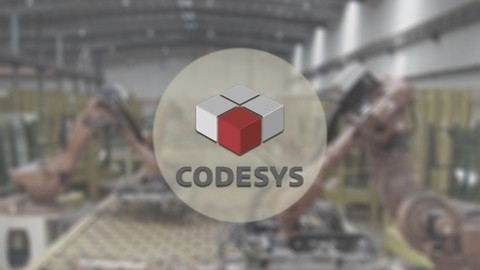Programmable Logic Controllers (PLCs) are the backbone of modern automation, controlling everything from manufacturing processes and traffic lights to complex robotic systems.
Understanding how to program and operate PLCs is a highly sought-after skill in industries like manufacturing, energy, and transportation.
Learning PLC programming opens doors to exciting career opportunities and empowers you to design and implement efficient automation solutions.
Finding the right PLC course on Udemy, however, can be like navigating a complex electrical circuit.
With countless options vying for your attention, it’s easy to feel overwhelmed and unsure which course will provide the solid foundation you need.
You’re looking for a course that not only covers the theoretical concepts but also provides hands-on experience and practical projects to solidify your understanding.
Based on our extensive analysis of numerous Udemy courses, we’ve determined that the PLC Fundamentals (Level I) course is the best overall choice.
This course provides a comprehensive introduction to PLC programming, covering essential concepts like ladder logic, digital and analog inputs/outputs, and common programming instructions.
It combines clear explanations with practical examples and simulations, ensuring you gain a strong grasp of the fundamentals.
While the PLC Fundamentals (Level I) course is our top recommendation, we understand that you might be looking for something more specific to your needs or skill level.
Therefore, we’ve compiled a list of other excellent PLC courses on Udemy, catering to various learning styles and areas of focus.
Keep reading to discover the perfect course to ignite your PLC programming journey.
PLC Fundamentals (Level I)
This PLC course takes you from the fundamentals of PLCs to programming industrial processes.
You will begin by understanding what PLCs are, their role in automation, and familiarizing yourself with industry leaders such as Rockwell Automation, Siemens, and ABB.
You will gain experience using the RSLogix 500 software to program Allen-Bradley PLCs, one of the most common PLC brands.
You will learn the core elements of PLC functionality, including digital and analog inputs and outputs, and how to use them for data conversion.
You will explore essential programming instructions like XIO, XIC, OTE, TON, and TOF, which you will use to create control logic for various applications.
As you progress, you will delve into advanced concepts such as PID control, used for regulating variables like temperature and flow rate, and discover how to design and program HMIs (Human Machine Interfaces) for seamless interaction with PLC systems.
The course goes beyond basic programming by introducing you to process logic development.
You will gain practical skills by developing programs for applications like blower control systems, tank and pump control systems, and heater control systems.
You will also explore the critical aspects of alarm and notification systems, learning how to program and integrate them into your PLC projects.
The course provides a solid foundation in communication protocols, particularly Modbus, enabling you to connect and control various devices within an automation system.
You will also become adept at troubleshooting and debugging your programs, ensuring they operate reliably and efficiently.
From Wire to PLC , A Bootcamp In Industrial Automation
This “From Wire to PLC” bootcamp equips you with a comprehensive understanding of industrial automation, starting from the fundamentals of electricity and culminating in advanced PLC programming.
You will begin by mastering the basics of electrical circuits, delving into concepts like current, voltage, and resistance.
You will explore different power systems, including AC and DC, and understand the role of three-phase systems and motors in industrial settings.
The course then immerses you in the practical aspects of industrial components.
You will become familiar with circuit breakers, relays, contactors, and fuses.
You will not only learn the theory behind these components but also gain practical experience by simulating them using industry-standard software.
You will transition from individual components to entire systems, mastering various motor driving techniques such as direct, forward-backward, and star-delta.
You will then delve into Variable Frequency Drives (VFDs) and soft starters, essential for controlling motor speed and torque in industrial applications.
The bootcamp also introduces you to a wide array of sensors vital to industrial automation.
You will learn about limit switches, proximity sensors, temperature sensors, flow sensors, and more.
You will not only understand their operation but also gain insights into troubleshooting them, a critical skill for anyone working with industrial equipment.
Learn 5 PLCs in a Day-AB, Siemens, Schneider, Omron & Delta
This course takes you on a journey to become a skilled PLC programmer.
You begin with the fundamentals of industrial control, learning about switches, output components, and how PLCs work.
You then delve into the world of PLC programming, starting with basic concepts like NO (normally open) and NC (normally closed) contacts.
The course guides you through programming five popular PLC brands: Allen Bradley, Siemens, Schneider, Omron, and Delta.
You discover each brand’s unique software and programming techniques, mastering skills like ladder logic, timer and counter functions, data handling, and more.
The course uses software like CCW, Microwin, ISP Soft, RSLogix, Cx-One, and Easy Builder Pro, allowing you to simulate and program a range of PLCs.
You learn to program real-world industrial applications like motor control, tank filling, and box sorting.
You also explore advanced concepts like HMI development, using software like Easy Builder Pro to create interactive user interfaces for your PLC programs.
You even dive into industrial communication protocols such as MODBUS TCP/IP, allowing your PLCs to communicate with other devices like HMIs and SCADA systems.
You practice your skills with realistic simulations using FACTORY IO, putting your knowledge to the test in practical scenarios.
Learn Siemens S7-1200 PLC & HMI from Scratch using TIA
This course on Siemens S7-1200 PLC and HMI provides a comprehensive understanding of industrial automation, starting with the basics and progressing to advanced concepts.
You will gain a strong foundation in PLC hardware, including its processor, memory, and wiring, and learn how to convert schematics to ladder diagrams.
The course utilizes Siemens TIA Portal, allowing you to program and simulate PLC and HMI projects and gain hands-on experience with various instructions, including bit logic operations, timers, counters, and comparative operators.
You will learn how to troubleshoot PLCs, implement safety circuits, and design HMI screens using the Siemens KTP 400.
The course covers creating switches, indicators, and animations, as well as working with dynamic text feedback, numeric displays, control functions, recipes, trend views, and data logging.
You will also dive into control systems, including PID control, learning to implement manual ON/OFF, proportional, and PI control systems.
The course teaches you about discrete and analogue alarms and how to configure them within your HMI.
You will develop an understanding of function blocks and their applications in organizing and reusing code.
Through practical exercises and simulations, you will apply your knowledge to real-world scenarios.
For example, you’ll learn to create a box sorting system and program liquid level control using SCL.
TIA Portal Master Project (Level 5)
The course starts with the fundamentals, guiding you through installing the TIA Portal software and the PLCSIM simulator.
You’ll learn how to navigate the interface and create your first PLC program from scratch.
The curriculum covers a range of programming languages including LAD, FBD, SCL, STL, and GRAPH, providing you with a versatile skillset for PLC programming.
This course doesn’t just stop at theory – it takes a hands-on approach.
You’ll dive into essential concepts like PID control loops, used extensively in industrial automation for precise process control.
You’ll also learn how to program HMIs, the interface that allows you to monitor and interact with your PLC systems.
One of the most exciting parts of the course is the power plant simulation project.
You’ll get to apply your knowledge to program a simulated power plant’s IO, alarms, system modes, operational sequences, control loops, and even an hourmeter.
You’ll design and program a custom HMI to control and visualize your power plant, mirroring real-world industrial applications.
Through this project, you gain experience in debugging, troubleshooting, and optimizing your code, preparing you for the challenges and rewards of a PLC programming career.
PLC Programming - Training from Scratch on RSLogix500 & 5000
This course equips you with a robust understanding of PLC programming, from the fundamentals to advanced concepts.
You begin by exploring the core of PLC hardware, grasping their history, components, and the different types of inputs and outputs – crucial knowledge for building any PLC program.
You will delve into the world of ladder logic using the RSLogix 500 software.
You will learn to download a free copy, understand data files and structures, and become proficient with essential ladder logic instructions like timers, counters, and comparators.
You won’t just learn the theory; you will apply your knowledge in practical mini-challenges, like designing a tank filling and discharging system, solidifying your understanding of these instructions in real-world scenarios.
You then advance to best practices for creating effective and dependable ladder logic code, learning to analyze complex rungs and avoid common pitfalls.
This course provides you with the tools to troubleshoot your code using RSLogix Emulate 500, a valuable asset for testing before deploying to live systems.
You will further solidify your skills by tackling two hands-on projects.
You will design a system to control a proximity sensor, button, and LED output and build a comprehensive streetlight control system incorporating an HMI using FactoryTalk View ME Edition.
You transition to the more sophisticated RSLogix 5000 software, used for programming larger-scale automation tasks.
You become adept at tag management, working with UDT structures, and interfacing with external hardware like the PowerFlex 525.
You even learn to create your own basic Add-On Instructions, granting you the power to customize your PLC programs further.
Finally, this course delves into integrating Cognex vision systems with your PLC setup.
You will configure Cognex modules, seamlessly pass data to your PLC, and process barcode information, opening doors to implementing powerful visual inspection capabilities in your automation solutions.
Studio 5000 PLC Ladder Logic Training. Basic.
You’ll begin by exploring different platforms like Compactlogix, Controllogix, and Softlogix, so you can pick the best one for your projects.
Then, you’ll discover how to create a new project from scratch, learning the ropes of tasks, programs, and routines in Studio 5000 and RSLogix 5000 software.
Get ready to dive into ladder logic programming, where you’ll master instructions like timers, counters, comparison instructions, and the JSR instruction.
Understanding program flow is essential, and this course breaks it down clearly.
Plus, you’ll learn how to define tags and I/O memory layouts, crucial skills for working with PLC systems.
Hands-on exercises, like the Car Wash, Mixer, and Furnace examples, let you apply your knowledge in practical scenarios.
You’ll learn to connect your PLC to a computer, troubleshoot issues online, and document your work effectively.
This course gives you a strong foundation in PLC programming, setting you on the path to automation success.
PLC Programming - Learn the basics with CoDeSys
This course begins by building a strong foundation in PLC fundamentals.
You learn about essential components like the CPU and how the RTOS makes it all work.
You also explore the different types of digital and analog signals that PLCs use to communicate with the real world and discover how to handle analog signals using scaling techniques.
The course then immerses you in the IEC 61131-3 standard, which is like the rulebook for PLC programming.
You learn about different programming languages this standard uses, such as LD for visual programming, ST for writing code, SFC for state machines, FBD for representing logic functions, and CFC for building complex control systems.
You gain practical experience with each language, understanding its strengths and applications.
The course introduces you to CoDeSys, a powerful software environment for PLC programming.
You learn how to download, install, and navigate CoDeSys, becoming familiar with its functionalities and standard function blocks.
The course guides you through troubleshooting common issues, ensuring a smooth experience as you start.
Finally, you apply your knowledge to practical exercises, such as designing a simplified elevator system.
You learn about state machines and modular programming, and how to develop reusable FCs and FBs.
This hands-on experience solidifies your understanding and equips you with the skills to create real-world PLC programs using CoDeSys.
